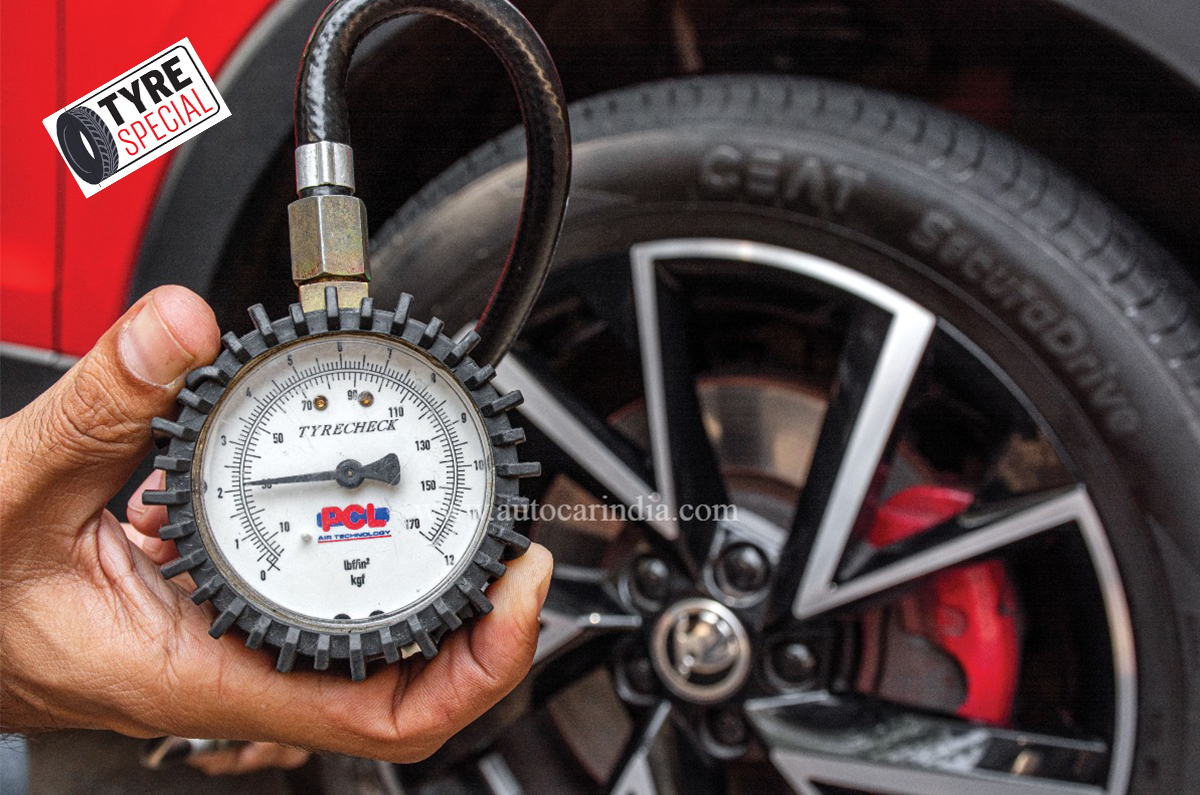Tyre care: How much air is too much?

Tyre pressure makes a world of a difference to how a car drives, yet it’s seldom given much thought. A basic question though is, what is the ideal tyre pressure? And the answer is simple enough – follow the carmaker’s recommended settings. The recommendation will usually have two values, for a lightly loaded as well as a fully loaded car, and this is usually found stickered inside the driver’s door pillar, the fuel filler cap and in the owner’s manual. There are, of course, a few more things to keep in mind when setting your tyre’s pressure.
Set pressure when tyres are cold
Air contracts when cold and expands when hot, and temperature can vary tyre pressure to a great extent. An ambient temperature drop of 10deg Celsius can drop tyre pressure by 1 to 2 PSI. So, it’s suggested to check your tyre pressure when a tyre is cold, right at the beginning of a drive.

It is equally important to ensure that the air-pressure gauge that you use is accurate and calibrated from time to time. So stick to a petrol pump or tyre shop you trust, or even better is to purchase a good quality portable tyre pressure gauge of your own. Today, there are also small and handy portable air compressors that you can use to fill and measure your tyre pressure.
Nitrogen's an option
While regular air does just fine for regular use, you can also use nitrogen, if you desire, to fill your tyres. Though marginal, there are quite a few gains in doing so. For starters, tyre pressures are maintained for a longer duration as there is a lower possibility of leakage because the nitrogen molecules are bigger than those of air. This means you won’t easily have underinflated tyres that can reduce your fuel efficiency, and it also will result in your tyres having the right-sized contact patch with the road. Another advantage of using nitrogen is that it runs much cooler than air and the risk of generating heat inside tyres is reduced.
Underinflation can lead to a blowout
Most people tend to think that lower air pressures can avoid a blowout. Some highway pump attendants even lower air pressure saying it’s safer. This is far from the truth though. The first thing to remember is that blowouts are a combination of a tyre’s condition, heat and air pressure. A worn down tyre or simply an old one with brittle and weak rubber is prone to a blowout and ambient heat and underinflating these tyres exacerbates the condition.

When a tyre is rotating, the sidewalls flex due to varying road and driving conditions, however, underinflation increases this flexing as the air inside is not enough to support the sidewalls. This causes the belts that make up a tyre to chaff against each other resulting in heat build-up. Excessive flexing also means the air inside is being pumped repeatedly, which further raises the temperature. The increased contact patch – a result of low pressure – also adds more heat due to the increased friction. Thus, as you can see, underinflation significantly increases the chances of a tyre blowout.

Additionally, underinflation can result in premature tyre wear and will reduce your fuel efficiency. The larger contact patch of an underinflated tyre increases its rolling resistance, and that means your car burns more fuel overcoming this. Remember how hard it was pedalling an underinflated cycle? This increased tyre patch also means you’ll need more effort to steer.
Overinflation can be pretty nasty too
Overinflation can be equally dangerous too. When tyres are filled with more than the recommended air pressure, the contact patch with the road shrinks and this considerably increases your braking distance. This reduced contact patch also means you will not have a uniform wear pattern on your tyre surface. Higher air pressure also means harder tyres, which leads to a bumpier ride.
TPMS is handy, but not all are the same
Many vehicles today have a tyre pressure monitoring system (TPMS) onboard, which warns a driver of a loss in tyre pressure and can also provide a readout of the pressure value. These systems are not as accurate and will only warn you if pressure drops by a significant value, usually over 20 percent. So it’s best to rely on this as a back up, and always use a good external gauge and check your pressures regularly. Also, importantly, there are two different types of systems in use today and with one of them, checking your pressure regularly is even more important.

The first is a direct TPMS, which uses pressure sensors inside the tyre to measure the pressure inside; some systems also measure the temperature. The sensors gather the data and transmit it wirelessly to the vehicle’s central computer, which can then give you a readout and trigger a warning in case of a loss in tyre pressure.
The second system is the less expensive indirect TPMS, which, for example, is used in the Tata Nexon EV. This does not actually measure the tyre pressure, but it deduces low pressure by comparing relative wheel speeds using the anti-lock braking system’s speed sensors. If one or more tyres lose air pressure, the wheel speed sensor will show a slight change in the wheel speed relative to the other, and then the system triggers a warning on the instrument cluster. The drawback here is that since the measurement is relative, if all four tyre pressures come down uniformly over time, it will not trigger an alert. You also have to first set the correct pressure and set the system too.
Also see:
Tyre care: Decoding markings on your car, SUV tyres
Tyre care: How to select the right tyre for your car, SUV
Monsoon tyre care and driving tips
from Autocar India https://ift.tt/U32fjok
Comments
Post a Comment